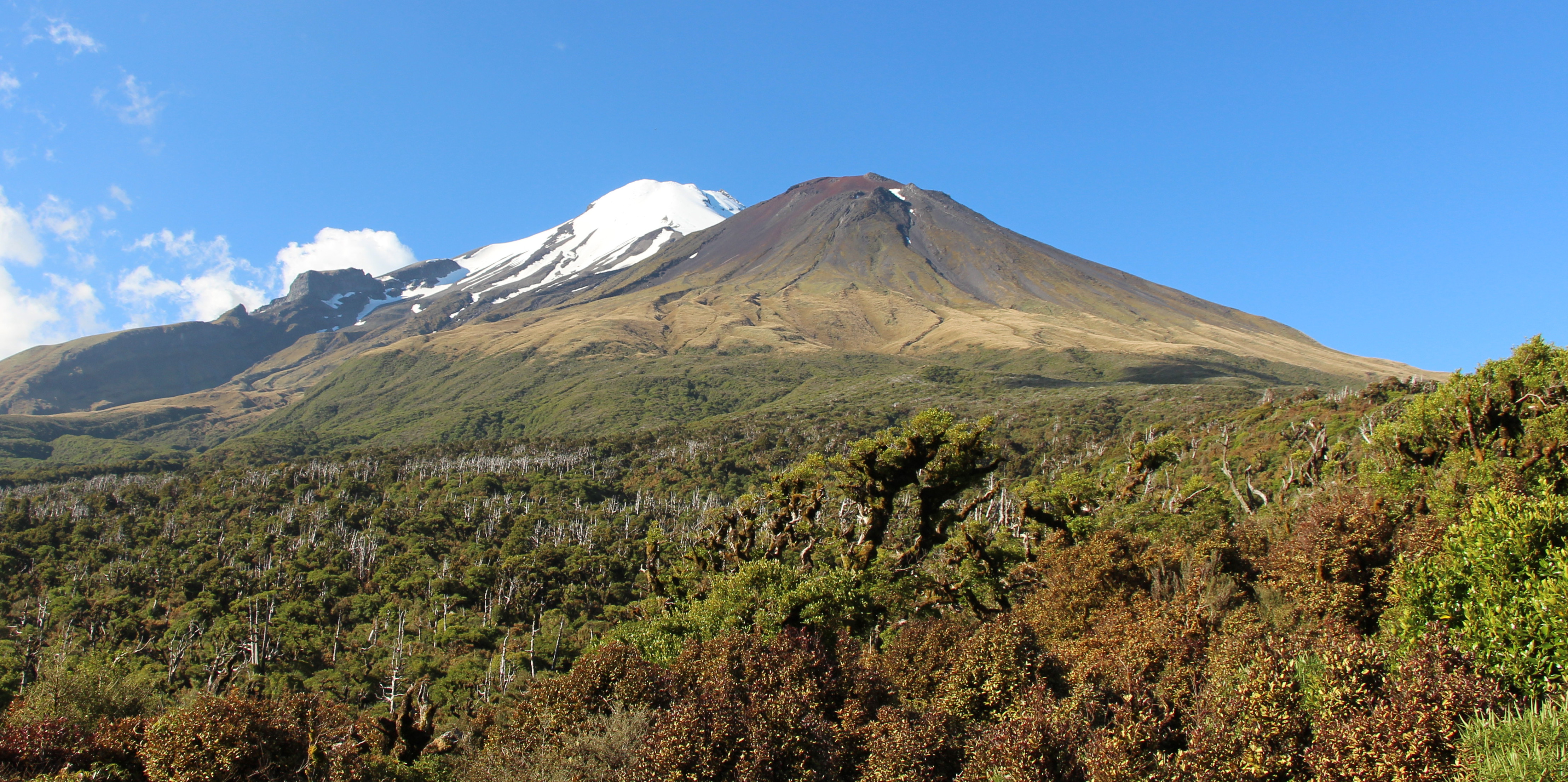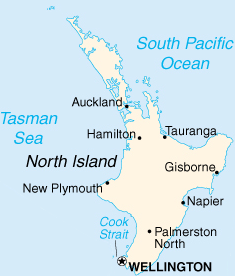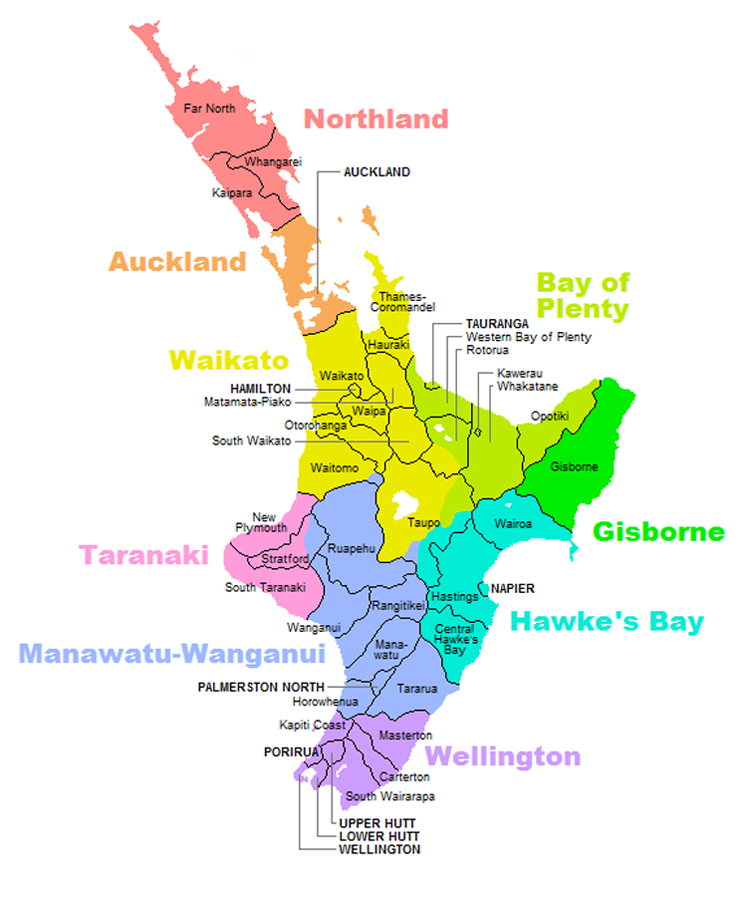North Island on:
[Wikipedia]
[Google]
[Amazon]
The North Island, also officially named Te Ika-a-Māui, is one of the two main islands of New Zealand, separated from the larger but much less populous
Ea Heinom Auwe
and
Aeheinomowe
, which recognises the "Fish of Māui" element. Despite this, revisionist historians and Ngai Tahu argue that, until the early 20th Century,
 During the Last Glacial Period when sea levels were over 100 metres lower than present day levels, the North and South islands were connected by a vast coastal plain which formed at the South Taranaki Bight. During this period, most of the North Island was covered in thorn scrubland and forest, while the modern-day Northland Peninsula was a subtropical rainforest. Sea levels began to rise 7,000 years ago, eventually separating the islands and linking the Cook Strait to the
During the Last Glacial Period when sea levels were over 100 metres lower than present day levels, the North and South islands were connected by a vast coastal plain which formed at the South Taranaki Bight. During this period, most of the North Island was covered in thorn scrubland and forest, while the modern-day Northland Peninsula was a subtropical rainforest. Sea levels began to rise 7,000 years ago, eventually separating the islands and linking the Cook Strait to the

 * Egmont National Park
* Tongariro National Park
* Waipoua Kauri Forest
* Whanganui National Park
* and many forest parks of New Zealand
* Egmont National Park
* Tongariro National Park
* Waipoua Kauri Forest
* Whanganui National Park
* and many forest parks of New Zealand
 The North Island has a larger population than the South Island, with the country's largest city, Auckland, and the capital, Wellington, accounting for nearly half of it.
There are 30 urban areas in the North Island with a population of 10,000 or more:
The North Island has a larger population than the South Island, with the country's largest city, Auckland, and the capital, Wellington, accounting for nearly half of it.
There are 30 urban areas in the North Island with a population of 10,000 or more:
 Nine local government regions cover the North Island and its adjacent islands and territorial waters.
* Northland
*
Nine local government regions cover the North Island and its adjacent islands and territorial waters.
* Northland
*
South Island
The South Island, also officially named , is the larger of the two major islands of New Zealand in surface area, the other being the smaller but more populous North Island. It is bordered to the north by Cook Strait, to the west by the Tasman ...
by the Cook Strait. The island's area is , making it the world's 14th-largest island. The world's 28th-most-populous island, Te Ika-a-Māui has a population of accounting for approximately % of the total residents of New Zealand.
Twelve main urban areas (half of them officially cities) are in the North Island. From north to south, they are Whangārei, Auckland
Auckland (pronounced ) ( mi, Tāmaki Makaurau) is a large metropolitan city in the North Island of New Zealand. The most populous urban area in the country and the fifth largest city in Oceania, Auckland has an urban population of about I ...
, Hamilton Hamilton may refer to:
People
* Hamilton (name), a common British surname and occasional given name, usually of Scottish origin, including a list of persons with the surname
** The Duke of Hamilton, the premier peer of Scotland
** Lord Hamilto ...
, Tauranga, Rotorua, Gisborne, New Plymouth, Napier, Hastings
Hastings () is a large seaside town and borough in East Sussex on the south coast of England,
east to the county town of Lewes and south east of London. The town gives its name to the Battle of Hastings, which took place to the north-west ...
, Whanganui
Whanganui (; ), also spelled Wanganui, is a city in the Manawatū-Whanganui region of New Zealand. The city is located on the west coast of the North Island at the mouth of the Whanganui River, New Zealand's longest navigable waterway. Whang ...
, Palmerston North
Palmerston North (; mi, Te Papa-i-Oea, known colloquially as Palmy) is a city in the North Island of New Zealand and the seat of the Manawatū-Whanganui region. Located in the eastern Manawatu Plains, the city is near the north bank of the ...
, and New Zealand's capital city Wellington
Wellington ( mi, Te Whanganui-a-Tara or ) is the capital city of New Zealand. It is located at the south-western tip of the North Island, between Cook Strait and the Remutaka Range. Wellington is the second-largest city in New Zealand by ...
, which is located at the south-west tip of the island.
Naming and usage
Although the island has been known as the North Island for many years, in 2009 the New Zealand Geographic Board found that, along with the South Island, the North Island had no official name. After a public consultation, the board officially named the island North Island or Te Ika-a-Māui in October 2013. In prose, the two main islands of New Zealand are called ''the North Island'' and ''the South Island'', with the definite article. It is also normal to use thepreposition
Prepositions and postpositions, together called adpositions (or broadly, in traditional grammar, simply prepositions), are a class of words used to express spatial or temporal relations (''in'', ''under'', ''towards'', ''before'') or mark various ...
''in'' rather than ''on'', for example "Hamilton is in the North Island", "my mother lives in the North Island". Maps, headings, tables, and adjectival expressions use ''North Island'' without "the".
Māori mythology
According toMāori mythology
Māori mythology and Māori traditions are two major categories into which the remote oral history of New Zealand's Māori may be divided. Māori myths concern fantastic tales relating to the origins of what was the observable world for the pr ...
, the North and South Islands of New Zealand arose through the actions of the demigod Māui. Māui and his brothers were fishing from their canoe (the South Island) when he caught a great fish and pulled it right up from the sea. While he was not looking his brothers fought over the fish and chopped it up. This great fish became the North Island and thus a Māori name for the North Island is Te Ika-a-Māui ("The Fish of Māui"). The mountains and valleys are believed to have been formed as a result of Māui's brothers' hacking at the fish.
During Captain James Cook's voyage between 1769 and 1770, Tahitian navigator Tupaia accompanied the circumnavigation of New Zealand. The maps described the North Island asEa Heinom Auwe
and
Aeheinomowe
, which recognises the "Fish of Māui" element. Despite this, revisionist historians and Ngai Tahu argue that, until the early 20th Century,
Aotearoa
''Aotearoa'' () is the current Māori-language name for New Zealand. The name was originally used by Māori in reference to only the North Island, with the name of the whole country being ''Aotearoa me Te Waipounamu'' ("North Island and Sout ...
was an alternative Māori name for the North Island. In present usage, Aotearoa is a collective Māori name for New Zealand as a whole.
Geography
 During the Last Glacial Period when sea levels were over 100 metres lower than present day levels, the North and South islands were connected by a vast coastal plain which formed at the South Taranaki Bight. During this period, most of the North Island was covered in thorn scrubland and forest, while the modern-day Northland Peninsula was a subtropical rainforest. Sea levels began to rise 7,000 years ago, eventually separating the islands and linking the Cook Strait to the
During the Last Glacial Period when sea levels were over 100 metres lower than present day levels, the North and South islands were connected by a vast coastal plain which formed at the South Taranaki Bight. During this period, most of the North Island was covered in thorn scrubland and forest, while the modern-day Northland Peninsula was a subtropical rainforest. Sea levels began to rise 7,000 years ago, eventually separating the islands and linking the Cook Strait to the Tasman Sea
The Tasman Sea (Māori: ''Te Tai-o-Rēhua'', ) is a marginal sea of the South Pacific Ocean, situated between Australia and New Zealand. It measures about across and about from north to south. The sea was named after the Dutch explorer ...
.
Bays and coastal features
* Bay of Islands * Bay of Plenty * Hauraki Gulf * Firth of Thames * Hawke Bay * Ninety Mile Beach * North Taranaki Bight * South Taranaki BightLakes and rivers
*Lake Taupō
Lake Taupō (also spelled Taupo; mi, Taupō-nui-a-Tia or ) is a large crater lake in New Zealand's North Island, located in the caldera of the Taupō Volcano. The lake is the namesake of the town of Taupō, which sits on a bay in the lake's n ...
* Waikato River
*Whanganui River
The Whanganui River is a major river in the North Island of New Zealand. It is the country's third-longest river, and has special status owing to its importance to the region's Māori people. In March 2017 it became the world's second natur ...
Capes and peninsulas
* Coromandel Peninsula * Northland Peninsula *Cape Palliser
Cape Palliser is a promontory on the southern coast of New Zealand's North Island and is the southernmost point of the North Island; it is in fact considerably farther south than Nelson or Blenheim in the South Island.
It is located at the easter ...
*Cape Reinga
, type =Cape
, photo = Cape Reinga, Northland, New Zealand, October 2007.jpg
, photo_width = 270px
, photo_alt =
, photo_caption =
, map = New Zealand
, map_width = 270px
...
* East Cape
* North Cape
Forests and national parks
 * Egmont National Park
* Tongariro National Park
* Waipoua Kauri Forest
* Whanganui National Park
* and many forest parks of New Zealand
* Egmont National Park
* Tongariro National Park
* Waipoua Kauri Forest
* Whanganui National Park
* and many forest parks of New Zealand
Volcanology
*Auckland Volcanic Field
The Auckland volcanic field is an area of monogenetic volcanoes covered by much of the metropolitan area of Auckland, New Zealand's largest city, located in the North Island. The approximately 53 volcanoes in the field have produced a diverse a ...
* Mount Ruapehu
* Mount Taranaki (''Taranaki Maunga'')
*Mount Tarawera
Mount Tarawera is a volcano on the North Island of New Zealand within the older but volcanically productive Ōkataina Caldera. Located 24 kilometres southeast of Rotorua, it consists of a series of rhyolitic lava domes that were fiss ...
* Whakaari / White Island
* North Island Volcanic Plateau
Other
* Waitomo Caves * TaumatawhakatangihangakoauauotamateaturipukakapikimaungahoronukupokaiwhenuakitanatahuDemographics
The North Island has an estimated population of as of . Ever since the conclusion of the Otago Goldrush in the 1860s, New Zealand's European population growth has experienced a steady 'Northern drift' as population centres in the North Island have grown faster than those of New Zealand's South Island. This population trend has continued into the twenty-first century, but at a much slower rate. While the North Island population continues to grows faster than the South Island, this is solely due to the North Island having higher natural increase (i.e. births minus deaths) and international migration; since the late 1980s, the internal migration flow has been from the North Island to the South Island. In the year to June 2020, the North Island gained 21,950 people from natural increase and 62,710 people from international migration, while losing 3,570 people from internal migration.Culture and identity
At the2018 New Zealand census
Eighteen or 18 may refer to:
* 18 (number), the natural number following 17 and preceding 19
* one of the years 18 BC, AD 18, 1918, 2018
Film, television and entertainment
* ''18'' (film), a 1993 Taiwanese experimental film based on the short ...
, 65.7% of North Islanders identified as of European ethnicity, 18.5% as Māori
Māori or Maori can refer to:
Relating to the Māori people
* Māori people of New Zealand, or members of that group
* Māori language, the language of the Māori people of New Zealand
* Māori culture
* Cook Islanders, the Māori people of the Co ...
, 17.0% as Asian, 9.7% as Pacific Islanders, 1.6% as Middle Eastern/Latin American/African, and 1.2% as another ethnicity (mainly 'New Zealander'). Totals add to more than 100% since people may identify with multiple ethnicities.
The proportion of North Islanders born overseas is 29.3%. The most common foreign countries of birth are England (15.4% of overseas-born residents), Mainland China (11.3%), India (10.1%), South Africa (5.9%), Australia (5.5%) and Samoa (5.3%).
Cities and towns
 The North Island has a larger population than the South Island, with the country's largest city, Auckland, and the capital, Wellington, accounting for nearly half of it.
There are 30 urban areas in the North Island with a population of 10,000 or more:
The North Island has a larger population than the South Island, with the country's largest city, Auckland, and the capital, Wellington, accounting for nearly half of it.
There are 30 urban areas in the North Island with a population of 10,000 or more:
Economy
The sub-national GDP of the North Island was estimated at US$102.863 billion in 2003, 79% of New Zealand's national GDP.Governance
Regions
 Nine local government regions cover the North Island and its adjacent islands and territorial waters.
* Northland
*
Nine local government regions cover the North Island and its adjacent islands and territorial waters.
* Northland
*Auckland
Auckland (pronounced ) ( mi, Tāmaki Makaurau) is a large metropolitan city in the North Island of New Zealand. The most populous urban area in the country and the fifth largest city in Oceania, Auckland has an urban population of about I ...
* Waikato
* Bay of Plenty
* Gisborne
*Taranaki
Taranaki is a region in the west of New Zealand's North Island. It is named after its main geographical feature, the stratovolcano of Mount Taranaki, also known as Mount Egmont.
The main centre is the city of New Plymouth. The New Plymouth D ...
*Manawatū-Whanganui
Manawatū-Whanganui (; spelled Manawatu-Wanganui prior to 2019) is a region in the lower half of the North Island of New Zealand, whose main population centres are the cities of Palmerston North and Whanganui. It is administered by the Manawa ...
* Hawke's Bay Region
* Wellington RegionHealthcare
Healthcare in the North Island is provided by fifteen District Health Boards (DHBs). Organised around geographical areas of varying population sizes, they are not coterminous with the Local Government Regions.See also
* List of islands of New ZealandReferences
External links
* * {{Coord, 38, 24, S, 175, 43, E, type:isle_scale:5000000, display=title Islands of New Zealand